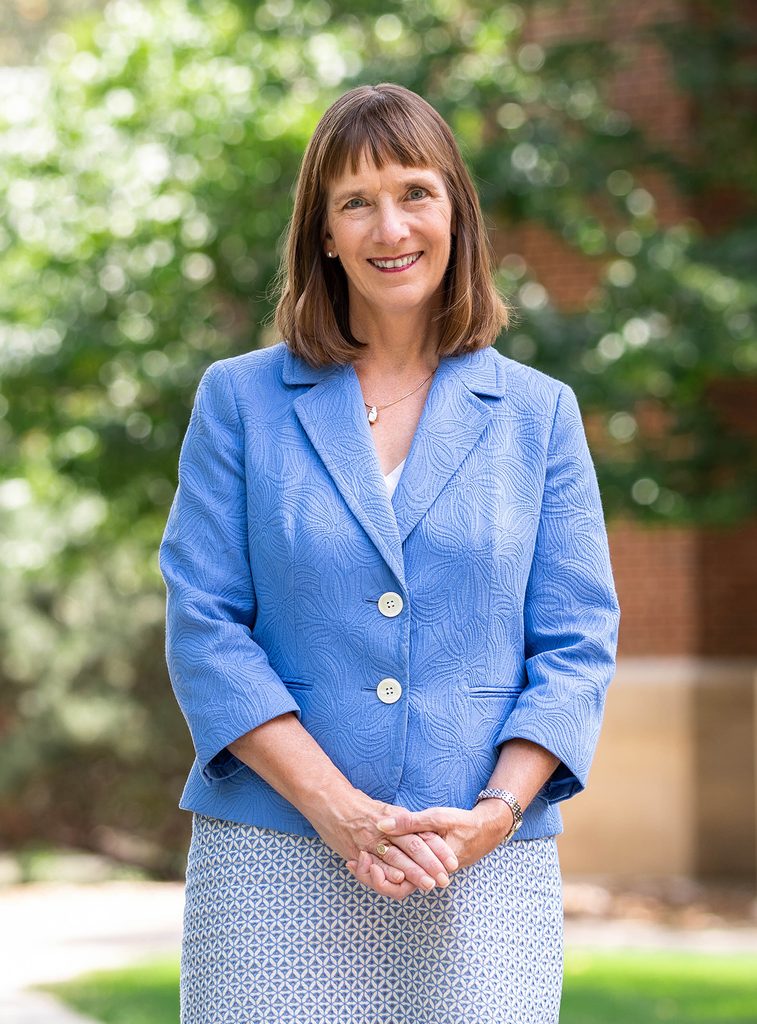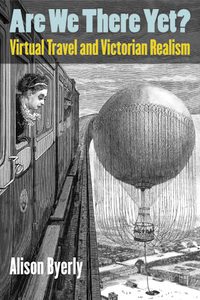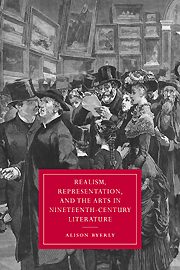Alison R. Byerly, Carleton’s 12th President

Alison Byerly became president of Carleton in 2021. Before coming to Carleton, she served for eight years as the president of Lafayette College and was a faculty member, provost, and executive vice president at Middlebury College for 24 years. A scholar of Victorian literature and culture, Byerly is the author of two scholarly books — Are We There Yet? Virtual Travel and Victorian Realism (Michigan, 2013) and Realism, Representation, and the Arts in Nineteenth-Century Literature (Cambridge, 1998) — and has written and spoken extensively on the role of technology in higher education. In 2022, she launched a strategic planning process, now in its final stages, focused on building an equitable community, advancing our understanding of the liberal arts, and expanding Carleton’s reach and impact.
A native of Pennsylvania, Byerly holds a B.A. with Honors in English from Wellesley College, and an M.A. and Ph.D. in English from the University of Pennsylvania. She is married to Stephen Jensen, a medical editor. Their daughter, Laramie, a 2015 graduate of Carleton College, received her doctorate in oceanography at Texas A&M and is a postdoctoral research fellow at University of Washington. Their son, Ryan, a graduate of Dickinson College, also has an MLIS degree from Drexel University.
Meet President Byerly
President Byerly shares her thoughts on leadership and working together with the entire Carleton community to move the College into the future as “a tremendous model for liberal arts education.”
If you would like to meet with President Byerly, please contact Jenny Pexa.
A Leading Voice in Higher Education
A leading voice nationally on emerging forms of digital scholarship, the changing role of the humanities in the digital age, the importance of curricular innovation, and MOOCs (massively open online courses), Alison Byerly has lectured widely on these topics at the annual convention of the Modern Language Association (MLA), the biennial Media in Transition conference, the Massachusetts Institute of Technology (MIT) Communications Forum, and other venues. Her essays have appeared in The Chronicle of Higher Education and Inside Higher Ed.
Higher education articles, essays, talks and interviews
“With petitions and lawsuits, some students demand lower tuition for online instruction.” ABC News, July 31, 2020
“Equity in Remote Education.” Chronicle of Higher Education Virtual Forum, July 22, 2020.
“Trump’s Coronavirus Testing Chief Concedes a Lag in Test Results. New York Times, July 31, 2020.
“This Pa. College President Raises Money by Doing Cannonballs and Rapping ‘Hamilton.’” Philadelphia Inquirer, Feb. 2, 2020
“Presidential Perspectives: Alison Byerly,” American Talent Initiative, Nov. 5, 2019
“Leading Higher Education into the Future.” Forbes, April 12, 2019
“Liberal Educators Look Inward.” Inside Higher Ed, May 23, 2016.
“Who Gains from College Diversity?” Letter to the editor, New York Times, May 19, 2016.
“Two College Presidents, On Education,” Letter to the editor, New York Times, July 29, 2015.
“Liberal Arts vs. STEM: The Right Degrees, The Wrong Debate.” Quoted, Forbes, June 19, 2015.
Book discussion on “The End of College: Creating the Future of Learning and the University of Everywhere.” Video commentary (begins 01:29), C-SPAN, March 18, 2015.
Panelist, Forum on the Future of Higher Education. State University of New York and Rockefeller Institute of Government. March 18, 2015
“Lehigh Valley Liberal Arts Colleges Warm up to Online Education.” Quoted, Morning Call, July 4, 2014.
“Digital Humanities, Digitizing Humanity.” Commentary, EDUCAUSE Review, May 19, 2014.
“Role of Humanities, in School and Life,” Letter to the editor, New York Times, Nov. 4, 2013.
“Affordability and Value.” Inside Higher Ed, Feb. 21, 2013.
“Formerly Known as Students.” Inside HigherEd, Oct. 29, 2012.
“Before You Jump On the Bandwagon…” Chronicle of Higher Education, Sept. 3, 2012.
“Pass-Fail Option For Professors.” Inside HigherEd, Aug. 7, 2012.
“The Online Checklist.” American Association of Colleges and Universities (AAC&U) Annual Conference, Atlanta, January 2013.
“What Do CAO’sThink? A Dialogue About Inside HigherEd Survey Findings.” Panel with Scott Jaschik and Debra Humphreys, American Association of Colleges and Universities (AAC&U), Atlanta, January 2013.
“The Faculty Role in the Digital Age.” Invited lecture at The College of New Jersey, May 8, 2013.
“Institutional and Public Policy Contexts in Higher Education.“ Panel presentation, ADE (MLA) Summer Seminar West, Boulder, June 2012.
“A Provost’s Guidelines for Writing External Letters of Evaluation.” ADE Bulletin 152, forthcoming.
Media/digital humanities essays and talks
“Formerly Known as Students.” Inside HigherEd, Oct. 29, 2012.
“You Are Here: Locative Media and the National Parks.” Paper presented at the Modern Language Association annual conference, January 2013.
“Evaluating Digital Scholarship,” NITLE (National Institute for Technology in Liberal Education) Online Seminar, October 2012.
“Information Networks in Doyle’s Sherlock Holmes and BBC’s Sherlock.” North American Victorian Studies Association (NAVSA) Conference, Madison, September 2012.
“Everything Old is New Again: The Digital Past and the Humanistic Future.” Modern Language Association Conference, Seattle, January 2012.
“Humanities in the Digital Age.” Video. Panel discussion with Steven Pinker and David Thorburn. MIT, Oct. 20, 2010.
“What Not to Save: The Future of Ephemera.” Media in Transition (MiT) 6 Conference, MIT, April 2009
Miscellaneous
“Battlestar Sinatraca.” Podcast #56, Various Breads and Butters, Dec. 23, 2015.
“Lafayette’s Leader Takes to Twitter,” Philadelphia Inquirer, April 22, 2014.
Scholarly Works
Alison Byerly is the author of two books, Are We There Yet? Virtual Travel and Victorian Realism, published in 2012 by the University of Michigan Press, and Realism, Representation, and the Arts in Nineteenth-Century Literature, published by Cambridge University Press in 1997 and reissued in paperback in 2006.

Are We There Yet? Virtual Travel and Victorian Realism connects the Victorian fascination with “virtual travel” with the rise of realism in 19th-century fiction and 21st-century experiments in virtual reality. Even as the expansion of river and railway networks in the 19th century made travel easier than ever before, staying at home and fantasizing about travel turned into a favorite pastime. New ways of representing place—360-degree panoramas, foldout river maps, exhaustive railway guides—offered themselves as substitutes for actual travel. Thinking of these representations as a form of “virtual travel” reveals a surprising continuity between the Victorian fascination with imaginative dislocation and 21st-century efforts to use digital technology to expand the physical boundaries of the self.
“Railway carriages are likened to chat rooms, balloonists encounter a ‘SimCity’ view of the metropolis, and the associative yet disconnected episodes of Jerome K. Jerome’s Three Men in a Boat resemble ‘links in a blog.’… Byerly’s wide-ranging and strenuously researched survey.. stakes out an intriguing basis from which to analyze the ‘indeterminacy’ inherent in the realist project.”
—Times Literary Supplement
“Byerly’s study is ambitious, original, and insightful…and it is testament to its stimulating thesis and rich cultural and historical scope that it deserves to be taken up, elaborated, and questioned by scholars from within nineteenth-century literary studies and well beyond.”
— Nineteenth-Century Literature
“Are We There Yet? helps us to imagine some of the destinations we could reach by aligning old literary problems with new contexts as well as with our own new media forms.”
— Studies in the Novel

Realism, Representation, and the Arts in Nineteenth-Century Literature examines the representation of a variety of arts–primarily painting, theater, and music–within the work of major nineteenth-century novelists. It charts a historical progression, from Romantic poetry, through mid-century Realism, to Aestheticism, showing how authors used references to other forms of art to illuminate their own aesthetic ideals. Examining the aesthetic theory and cultural practice of different arts, Byerly demonstrates the importance of artistic representation to the development of Victorian Realism.
“Alison Byerly’s rich, stimulating, wide-ranging, and admirably compact new book raises a provocative set of questions.”
— Australasian Victorian Studies Journal
“… a persuasive, thoroughly readable, and well-constructed book.”
— Jennifer Green-Lewis, Victorian Studies
Selected Articles and Presentations
“Media.” Victorian Literature and Culture, 46 (3-4), 759-763. Fall/Winter 2018. doi:10.1017/S1060150318000761
“Victorian STEAM to Digital Humanities: Mediations of Art and Technology.” Keynote Address, Victorian STEAM: Victorians Institute Conference 2016. North Carolina State University, October 2016.
“Liberal Education in the Modern University,” panel presentation, Does Liberal Education Need Saving? Annual Weissbourd Conference at the University of Chicago, May 2016.
“Virtuality and Presence: Victorian Media and the Attenuation of the Self.” Invited lecture, Oxford University, January 2015.
“Are We There Yet?” Invited lecture in conjunction with Gibson/Martelli’s virtual reality exhibition ‘80° N’, QUAD Gallery, Derby, January 2015.
“Technologies of Travel in the Victorian Novel,” Oxford Handbook of the Victorian Novel, ed. Lisa Rodensky (Oxford University Press, 2013), pp. 289-311. Doi: http://dx.doi.org/10.1093/oxfordhb/9780199533145.013.0015
“Virtual Travel and Victorian Realism.” Invited lecture, Harvard Humanities Center, March 2013.
“Everything Old is New Again: The Digital Past and the Humanistic Future.” Modern Language Association (MLA) Conference, Seattle, January 2012. http://web.duke.edu/~ves4/mla2012/Byerly-DigitalPast-HumanisticFuture.pdf
“’A Prodigious Map Beneath His Feet’: Virtual Travel and the Panoramic Perspective,” Nineteenth-Century Contexts Vol. 29, Numbers 2-3 (June/September 2007): 151-69. www.tandfonline.com/doi/abs/10.1080/08905490701584643
“Rivers, Journeys, and the Construction of Place in Nineteenth-Century English Literature,” in Steven Rosendale, ed., The Greening of Literary Scholarship: Literature, Theory, and the Environment. (Iowa University Press, 2002): 77-94.
“Effortless Art: The Sketch in Nineteenth-Century Painting and Literature,” Criticism 41, 3 (Summer 1999): 349-64. http://www.jstor.org/stable/23124216
“The Uses of Landscape: The Picturesque Aesthetic and the National Park System,” in The Ecocriticism Reader: Landmarks in Literary Ecology, ed. Harold Fromm and Cheryll Glotfelty. (University of Georgia Press, 1996). http://goo.gl/CgJSV
“‘The Language of the Soul’: George Eliot and Music,” Nineteenth-Century Literature, June 1989: 1-17. http://www.jstor.org/pss/3045104